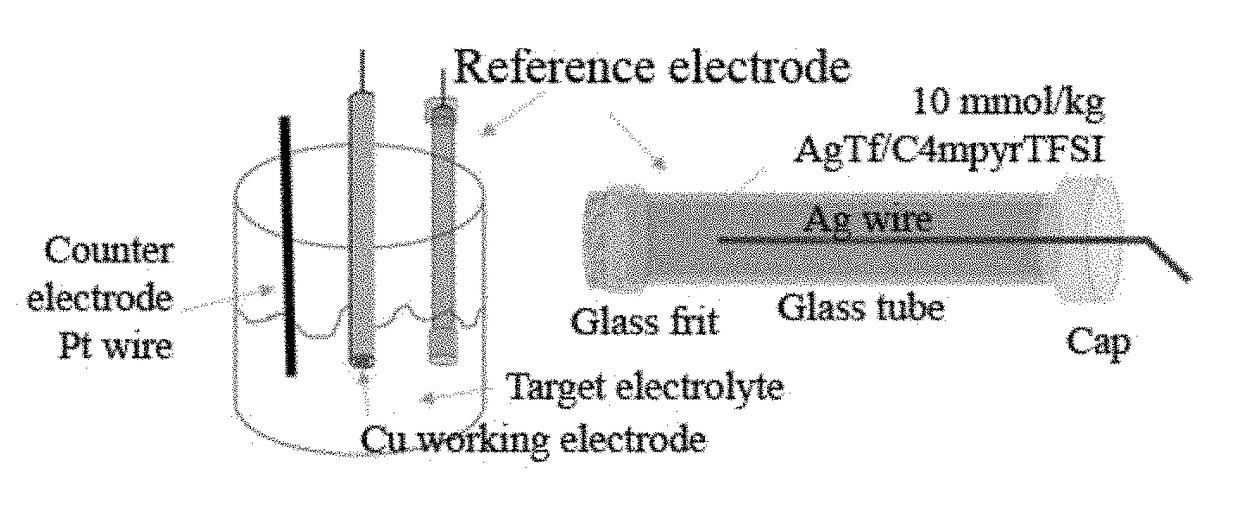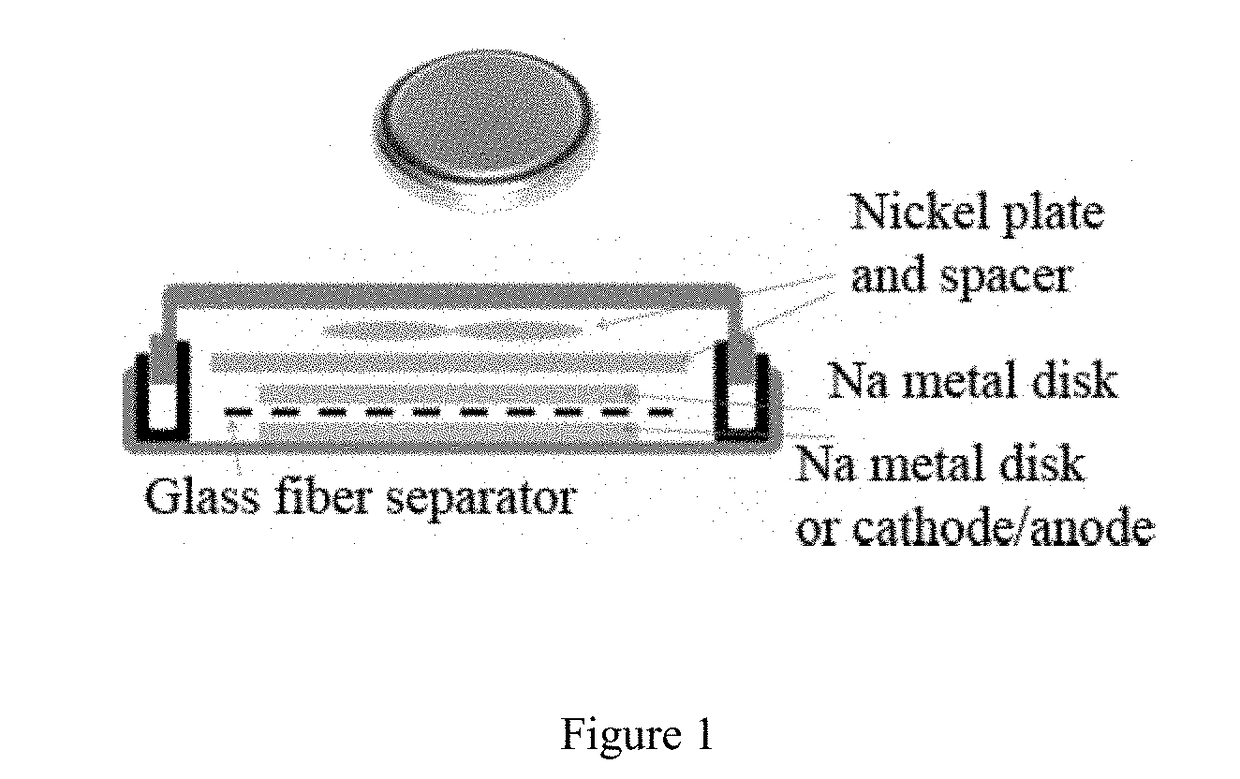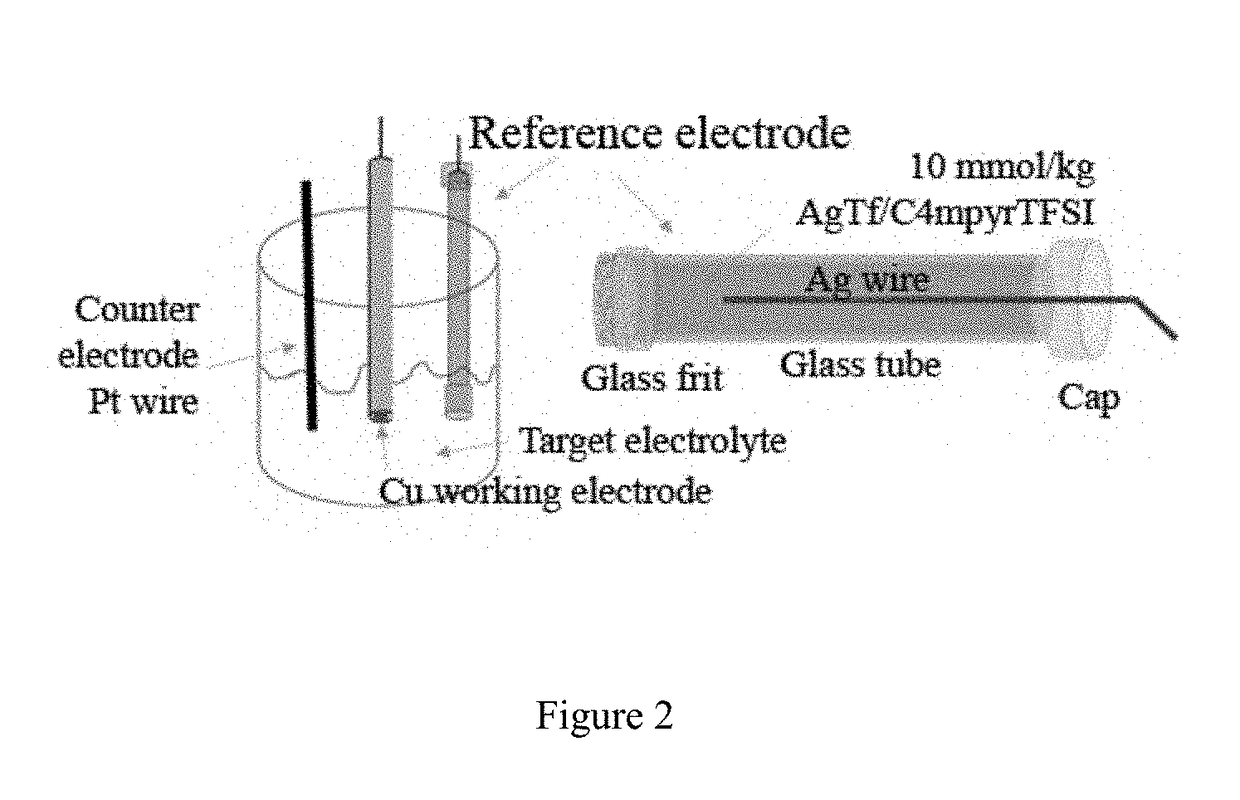Electrochemical cell
- Summary
- Abstract
- Description
- Claims
- Application Information
AI Technical Summary
Benefits of technology
Problems solved by technology
Method used
Image
Examples
example 1
[0159]The fraction of charge carried by the sodium-ion in the electrolyte, as indicated by the sodium-ion transference number is represented in FIG. 3 for a range of concentrations. The test was performed using a Na|Na electrochemical cell comprising two Na metal electrodes according to the method described in P. G. Bruce, C. A. Vincent, Journal of Electroanalytical Chemistry and Interfacial Electrochemistry (1987), volume 225, pages 1-17, the content of which is included herein in its entirety. The relative contribution of the sodium-ion to charge transport within the electrolyte is observed to increase with increasing sodium-ion concentration.
example 2
[0160]The electrochemical stability and performance of a sodium electrode deposited on a Cu substrate is determined by successive cyclic voltammetry experiments (5 cycles), using 3-electrode cells of the kind described herein and obtained using a Na[FSI] / [C3mpyr][FSI] electrolyte with different sodium-ion concentrations. The test was conducted at 20 mV / s and at room temperature. The results of the test are illustrated in FIG. 4.
[0161]Effective deposition and dissolution of sodium is observed, with no indication of degradation to the electrolyte. The cell with the highest concentration of sodium-ion in the electrolyte (50 mol %) is observed to support stable cycling currents with negligible decay compared to the other compositions.
example 3
[0162]The electrochemical stability and performance of a sodium electrode deposited on a Cu substrate is determined by cyclic voltammetry (5 cycles), using a 3-electrode cell as described herein and [NaFSI] / [N2(2O2O1)3][TFSI] electrolyte with a sodium-ion concentration of 63 mol %.
[0163]The test was conducted at 20 mV / s at 75° C. The results of the test are illustrated in FIG. 5. During the test effective deposition and dissolution of sodium was observed, with no indication of degradation to the electrolyte. The test shows that at elevated temperature such as 75° C. the cell is observed to support stable cycling currents with negligible decay.
PUM
 Login to View More
Login to View More Abstract
Description
Claims
Application Information
 Login to View More
Login to View More - R&D
- Intellectual Property
- Life Sciences
- Materials
- Tech Scout
- Unparalleled Data Quality
- Higher Quality Content
- 60% Fewer Hallucinations
Browse by: Latest US Patents, China's latest patents, Technical Efficacy Thesaurus, Application Domain, Technology Topic, Popular Technical Reports.
© 2025 PatSnap. All rights reserved.Legal|Privacy policy|Modern Slavery Act Transparency Statement|Sitemap|About US| Contact US: help@patsnap.com



